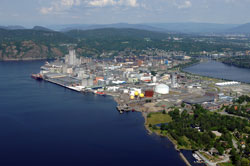Establishments that are subject to the National Seveso Regulation ("Seveso establishments") include many different types of companies, from simple explosive storage facilities, fuel and gas depots to complex process industry. The companies have very different risk potential and varying level of expertise and resources. An important prerequisite for the methodology is therefore that it can be applicable to a wide range of businesses.
Based on a literature review of similar work in other countries and a workshop with international participation SINTEF recommends a three part methodology for monitoring safety trends in and around Seveso establishments:
- Risk classification of establishments
- Safety indicators based on the regulators' inspection results
- Safety indicators based on data submitted by the establishments
Part 1 of the methodology gives a risk classification both with respect to employees and property, and 3rd party/environment. Part 2 and Part 3 represent traditional safety indicators that should be monitored e.g. on an annual basis.
The project can be seen as a first step in developing a methodology for measuring safety development in and around Seveso establishments. Considerable work remains to develop the methodology, implementing a first set of indicators, and later adjust the methodology and the number of indicators as experience is gained.
